Long regarded as a charlatan’s game, alchemy is now taking its proper place in the history of science.

In a light-filled room in a building behind the State Museum of Prehistory in Halle, Germany, a row of tables is lined with oddly shaped glass vessels. When Christian-Heinrich Wunderlich saw them for the first time three years ago, they were in thousands of pieces, enough to fill six crates. Archaeologists had discovered the fragments during a rescue excavation in nearby Wittenberg in a niche underneath what had been a fifteenth-century monastery’s basement stairway.
When the crates had first been brought to his lab, Wunderlich, who is the head of the Saxony-Anhalt State Office for Heritage Management and Archaeology’s restoration facility, assumed they contained centuries-old ordinary household garbage, likely broken drinking glasses and clay cookware, that had been swept up and forgotten. “At first we thought it was just a lot of glass,” Wunderlich recalls. “We noticed the weird shapes, and just shook our heads.”
A few of the most misshapen shards landed on Wunderlich’s desk. He noted that some were discolored and melted, as though they had been subjected to extreme heat. At least half were coated with curious residues—silvery crystals, for example, or thick, crusty red or brown layers. As Wunderlich pondered them, he began to wonder if there was something else to the story. He decided to pursue a hunch, scraping tiny bits of residue off one of the shards for chemical analysis. The results included the presence of copious antimony and antimony ore. “That’s when we understood that these were the tools of an alchemist,” he says.
This story is from the {{IssueName}} edition of {{MagazineName}}.
Start your 7-day Magzter GOLD free trial to access thousands of curated premium stories, and 9,000+ magazines and newspapers.
Already a subscriber ? Sign In
This story is from the {{IssueName}} edition of {{MagazineName}}.
Start your 7-day Magzter GOLD free trial to access thousands of curated premium stories, and 9,000+ magazines and newspapers.
Already a subscriber? Sign In
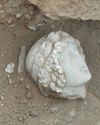
Digs & Discoveries - A Friend For Hercules - Archaeologists discovered a finely carved head depicting Apollo, god of the sun, music, and poetry.
While digging at the crossroads of the two main streets in the ancient city of Philippi in northern Greece, archaeologists discovered a finely carved head depicting Apollo, god of the sun, music, and poetry.
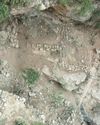
Digs & Discoveries - A Fortress Sanctuary - A sprawling 2,000-year-old fortress in the Zagros Mountains of Iraqi Kurdistan appears to have included a sanctuary dedicated to the ancient Persian water goddess Anahita.
A sprawling 2,000-year-old fortress in the Zagros Mountains of Iraqi Kurdistan appears to have included a sanctuary dedicated to the ancient Persian water goddess Anahita.
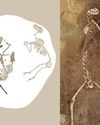
Like Cats And Dogs – Archeologist fund the skeleton of a male Eurasian lynx (Lynx lynx), a notoriously shy creature.
Оn the periphery of Zamárdi, an ancient lakeshore settlement in west-central Hungary, archaeologists uncovered a nearly five-foot-deep beehive-shaped pit with the skeletons of four adult dogs buried in successive shallow layers.
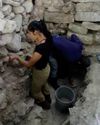
A Dynasty Born In Fire- How an upstart Maya king forged a new social order amid chaos
At the beginning of the Terminal Classic period (ca. A.D. 810-1000), many of the great kingdoms of the southern Maya lowlands-among them Tikal, Palenque, and Calakmul-were being abandoned or collapsing. For many years, scholars have assumed that most, if not all, the other kingdoms across the Maya world must have also been in steep decline.
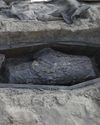
Medical Malfeasance - Archaeologists uncovered two coffins during excavations of a nineteenth-century cemetery in Quebec City that provide evidence of the illicit practice of diverting corpses for the study of human anatomy.
Archaeologists uncovered two coffins during excavations of a nineteenth-century cemetery in Quebec City that provide evidence of the illicit practice of diverting corpses for the study of human anatomy. Starting in 1847, medical students were required to have practical experience studying human anatomy, but legal options to procure cadavers were limited
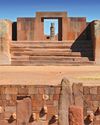
RISE AND FALL OF TIWANAKU
New dating techniques are unraveling the mystery of a sacred Andean city
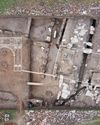
Making a Roman Emperor
A newly discovered monumental arch in Serbia reveals a family's rise to power in the late second century A.D.
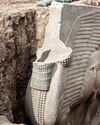
The Assyrian Renaissance
Archaeologists return to Nineveh in northern Iraq, one of the ancient world's grandest imperial capitals

Java's Megalithic Mountain
Across the Indonesian archipelago, people raised immense stones to honor their ancestors
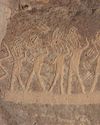
THE SONG IN THE STONE
Located in a desert gorge in southern Peru, Toro Muerto is one of the richest rock art sites in South America. It includes at least 2,600 boulders bearing petroglyphs, many featuring figures known as danzantes who appear to be dancing.